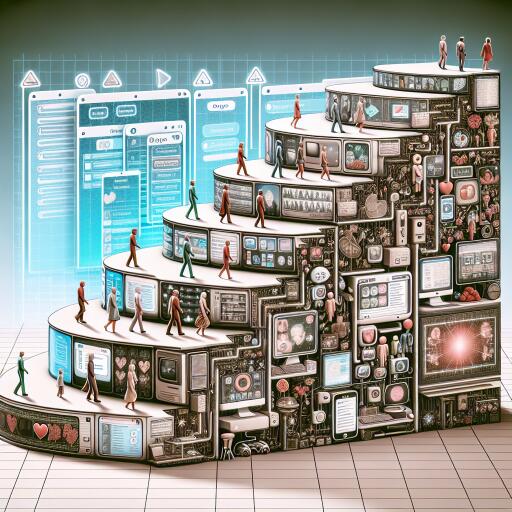Navigating the Complex World of Dating Apps: From Match.com to AI
The landscape of love and dating has undergone a seismic shift since the advent of the first online dating platform, Match.com, nearly three decades ago. Created by Gary Kremen, it marked the dawn of a new era in the search for romance, setting the stage for a future where Silicon Valley could play Cupid. Fast forward to today, and the proliferation of dating apps has not only expanded the playing field but also introduced a plethora of complexities and challenges in the pursuit of love.
The Misinterpretation Maze
One of the most significant hurdles in modern dating is the prevalent misinterpretation of intentions. A study revealed a glaring disconnect between male and female users on apps like Tinder, with a majority seeking serious relationships yet misjudging the other’s desires for either long-term commitment or casual encounters. This miscommunication fosters a cycle of assumptions and misunderstandings, complicating the journey towards finding a meaningful connection.
Controversial Conversations and the Celibacy Campaign
Controversy isn’t far behind in the world of dating apps, with some promotional campaigns sparking significant backlash due to their sensitive nature. For instance, a dating app faced criticism for its anti-celibacy messaging, indicating the complex terrain of personal choices, sexual autonomy, and technological influence in modern dating narratives.
The Phenomenon of Sexual Recession
Amidst changing social dynamics, studies have observed a downward trend in sexual activity across various demographics, a phase often referred to as the “Sexual Recession.” Various factors, including higher standards for partners and a general disinterest in traditional dating, have contributed to a significant portion of the population opting out of the dating scene altogether, highlighting a shift in personal and societal values concerning relationships and intimacy.
The Digital Matchmakers
As the digital domain continues to serve as the modern cupid, apps like Hinge and Bumble have emerged, distinguishing themselves as platforms for serious relationships, in contrast to the fast-paced swiping culture. However, this evolution isn’t without its own set of problems, as users report experiences of addiction, frustration, and dissatisfaction, casting doubt on the effectiveness of algorithms and app mechanics in fostering genuine human connections.
The Elite and the Niche
Exclusive and niche dating apps have carved out their own space within the ecosystem, catering to specific demographics and interests from celebrities to those interested in exploring non-traditional relationship dynamics. Despite their targeted approach, these platforms also grapple with issues of privacy, authenticity, and the delicate balance of self-presentation versus reality.
AI: The Future of Finding Love?
Artificial Intelligence (AI) represents the new frontier in the quest for love, with dating applications harnessing this technology to optimize user experiences, from selecting the most flattering photos to crafting personalized messages. While the integration of AI offers promising shortcuts in the search for a soulmate, it also raises questions about the authenticity of connections formed through algorithmically mediated interactions.
The journey from Match.com to contemporary dating apps like Tinder, Bumble, and Hinge encapsulates the complexities of modern romance. As technology continues to shape the way we connect, the quest for love remains a blend of traditional desires and digital innovations. With the advent of AI and continuous evolution of platforms, the future of dating holds endless possibilities, underscored by the timeless pursuit of genuine human connections.
As we navigate this intricate world of digital dating, the essence of love remains a puzzle, pieced together through a blend of technology, personal intention, and the universal desire for companionship. The ongoing challenge will be to bridge the gap between technological advancements and the profound, unpredictable nature of human emotions.









